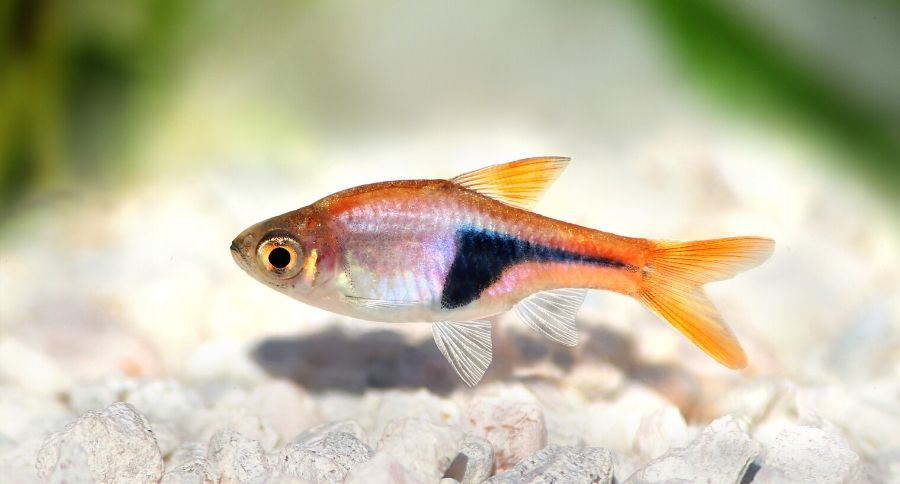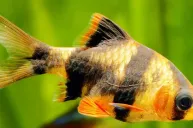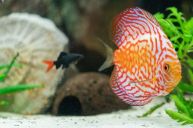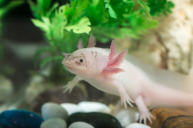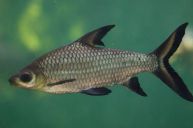The harlequin rasbora is a schooling fish and will be happy with six or more of its own kind! Perhaps you'd hear a fish choir underwater coming from these beautiful fish.
These small shoaling fish are easy to care for and can be looked after by people of varying experience levels. Harlequins are perfect for beginners starting a community aquarium. A small group adds some color and shoaling behaviors to the middle levels of the tank.
According to experts they're peaceful fish and get along well with others.
Breed overview and fun facts:
- Scientific name: Trigonostigma heteromorpha
- Size: 2 inches (they're tiny)
- If you keep them healthy, they can live for 5-8 years
- There are more than five dozen species of rasbora, and the harlequin is the most popular of them all.
- Care Level: Easy to Moderate, but only add to a tank that has already been through the aquarium nitrogen cycle.
Appearance
Their markings are beautiful. The Spruce Pets tells us that the body is a reddish-copper color that is accented by a striking black wedge covering the rear half of the body, like a characteristic black "pork chop" shaped patch. The distinguishing triangular patch begins near the dorsal fin and comes to a point near the base of the caudal fin.
Behavior and temperament
The harlequin rasbora is a shoaling fish, it should be kept in schools of eight to 10 individuals. Since the fish is rather peaceful, it makes a good community fish.
Tankmates
They are a very peaceful little fish. Keep them in a small school and try not to keep them with larger fish that may be tempted to eat them or fish that may harass them.
How do you care for them? Most of their time will be spent in the middle layers of the water. They rarely journey to the surface or substrate. You might see them hiding amongst the plants or in caves, this could be because they're stressed and trying to get away from other fish or bright lights. Make sure you take the time to observe your fish!
What about diet?
"Rasboras" are low-maintenance when it comes to diet; they will happily eat flake food, dried, frozen and live foods. A varied diet will ensure that digestive problems or susceptibility to disease do not occur. Try to vary their diet.
This can be done with live or frozen foods. Daphnia, bloodworms, brine shrimp and insect larvae are some small examples. Live foods will make feeding times interesting by introducing movement.
Our best rule of thumb, according to experts at The Spruce Pets, when it comes to roomies?
"You can keep it with any fish as long it's not large and a predator. It will not nip at or quarrel with any other species. Some potentially good tankmates may include cardinal tetras, bettas, neon tetras, small barbs, dwarf gouramis, danios, other small rasboras and cory catfish."
Keep some live plants around the tank for them to hide in, though leave plenty of open swimming areas for them to shoal and swim around in. They'll enjoy the coloration, too. The minimum tank size should be a 20-gallon tank (schooling fish).
Lastly, where did these little peaceful fish come from? This species is native to Asia and is commonly seen around Malaysia, Singapore and Thailand. Here they inhabit rivers, streams and swamp forests that resemble the blackwater habitats of South America.
For fish supplies, visit Chewy.
Do you have any Harlequin fish in your tank? Please let us know in the below comments!
